Getting back into the tube amp projects
Hello, and welcome to my page!
Now that winter has definitely settled in for a while, I've been getting back into my winter hobbies. I've recently written about my model train hobby, and today I'm going to write about my hobby of working on vintage tube powered amplifiers. I occasionally fix old guitar amplifiers for a friend who has a business involving the buying and selling of old musical gear, among other things. I also like to convert old tube powered public address amplifiers to guitar amplifiers. Some of my efforts are more successful than others, but I enjoy doing it anyway
For this post, I'll be talking about one of my long term amplifier projects. I wrote several posts about this amp project last winter. I had to do a search on steemit to find the old posts, the search says the posts were 2 years ago, but my pictures for those posts are dated January and February of 2018 on my computer. Anyway, here's the link to the last post that I could find of that series.
https://steemit.com/music-equipment/@amberyooper/repurposing-an-old-tube-amp-part-4
This amp project started out as a Bogan Challenger model CHB-35A. The amplifier has a steel case as built. This case had been messed with a bit before I got it, normally there's no input jacks on the upper face of the amp. These amps were used in stores for background music, and in places like schools for announcements. All of the original connections are on the back of the amp.
I started working on this amplifier again last week. I had left off working on the amp last spring at a point where the amp was working, but it still needed to have the preamp worked with to tame the signal going to the driver and power output tubes. I also had decided to change the power tubes from the hi-fi large 9 pin type 7868 tubes to the 8 pin octal socket type 7591A. The 7868 tubes are a really good tube, but they're a bit too clean sounding for some guitarists, and they've gotten harder to get. The 7591A tube has the same operating characteristics as the 7868, but has the more common 8 pin socket layout, and is also more available for replacement when they wear out from use.
Of course, swapping out the tube type means changing the tube sockets and hooking up the new sockets to the wiring in the amp. Here's the amp with the large 9 pin sockets still in it.
Here, I have all the wires pulled off the 9 pin sockets, and the replacement octal sockets are sitting next to the amp.
The replacement octal sockets are installed.
The wiring is hooked up to the sockets.
The tubes are installed and ready for testing.
After further testing of the amp, I've started changing certain parts in the preamp to try to modify the signal strength going to the output section of the amp. The signal is too strong and overloads the output section causing it to distort at too low of a volume. This part of the process is mostly a matter of changing the values of a couple of resistors in the circuit and testing the result to see if it works the way you want it to.
This amp has 3 stages of signal amplification before the output driver section. The first stage is the signal input stage, it is wired a certain way and just does what it does. It's the second and third stages that usually cause me problems with reworking them due to too much signal strength. More testing and parts swapping will probably be necessary to get the amp to sound the way I want it to, but that's part of the process for me.
Once I get the amp to sound the way that I want it to, I'll be able to do a demo video of the amp. Hopefully, I'll have this thing ready pretty soon. Also, I've started working on another amplifier project, so I'll be writing about that project also.
That's all I have for this post. Thanks for stopping by to check it out!
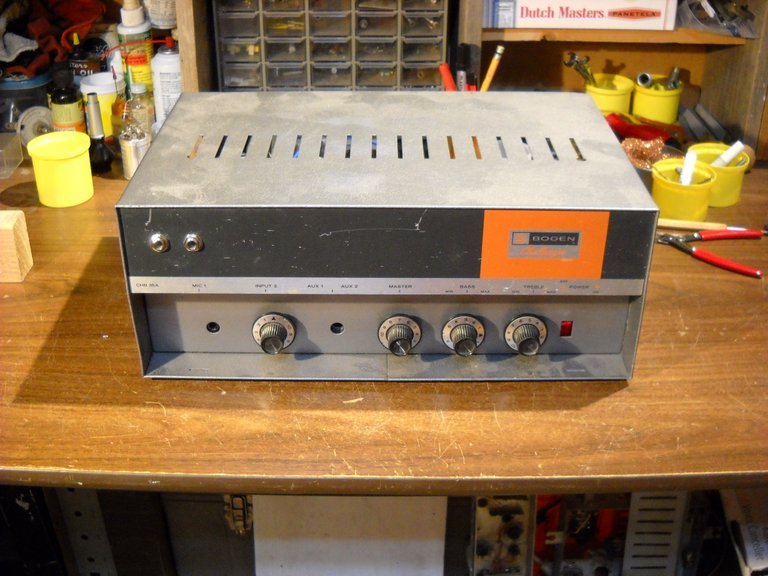
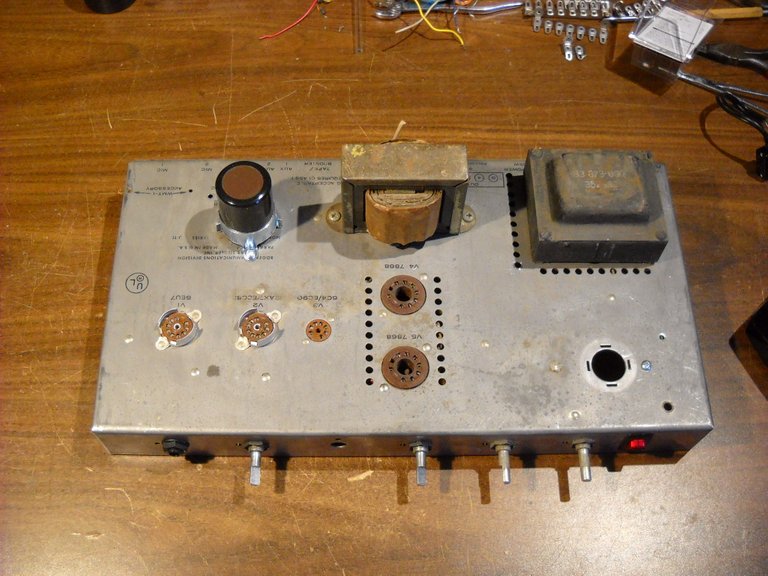
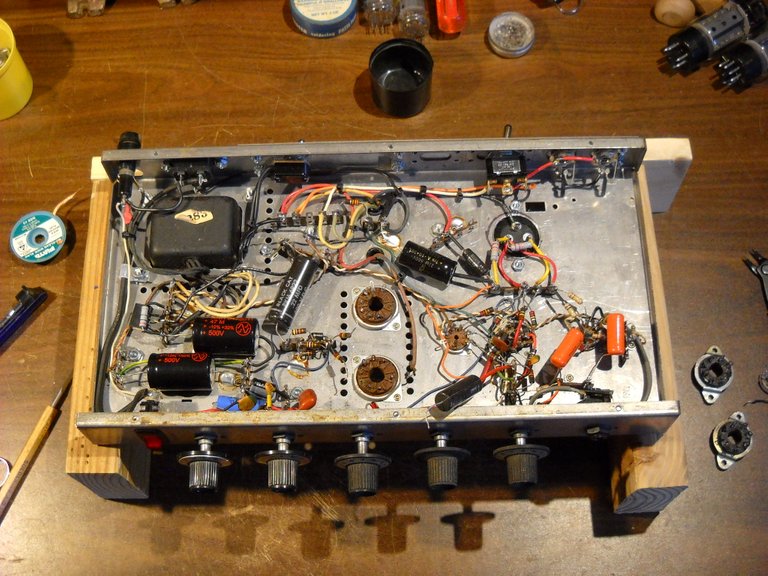
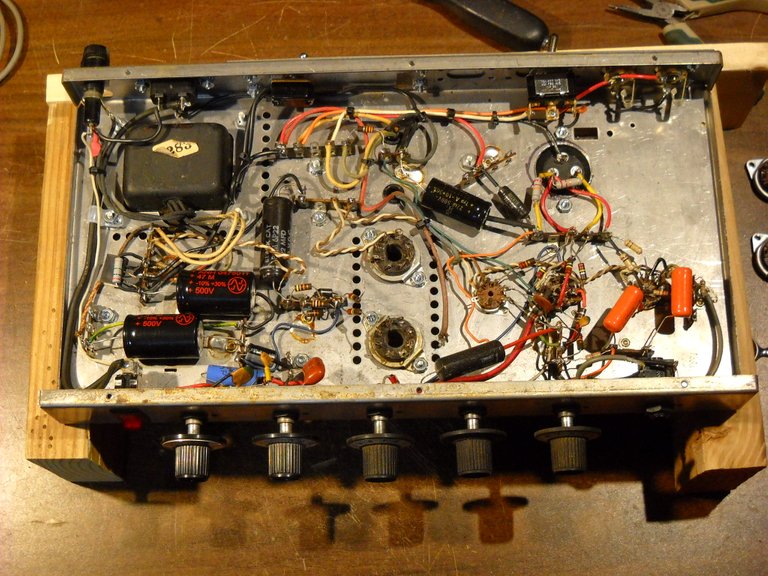
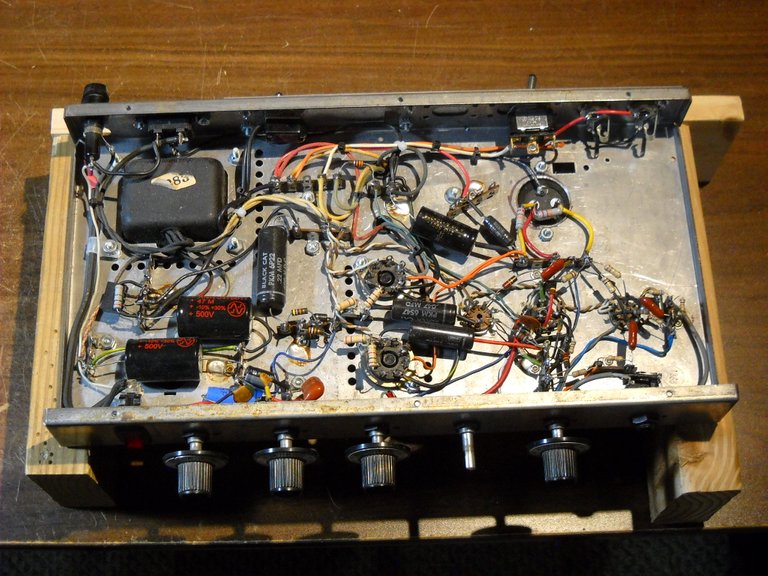
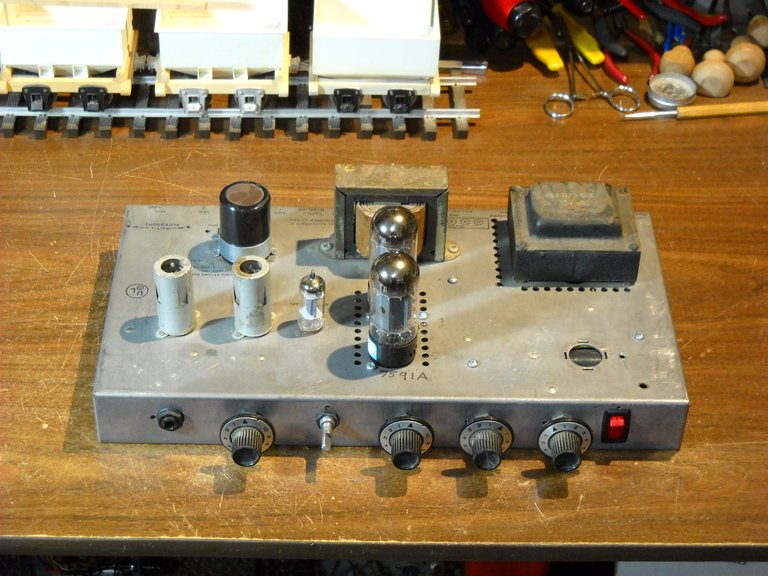
You must get a lot of satisfaction out of bringing something back to life...Doing something yourself, achieving a goal. It'll be cool to see (hear) it working.
Hello,
Your post has been manually curated by a @stem.curate curator.
We are dedicated to supporting great content, like yours on the STEMGeeks tribe.
If you like what we are doing, please show your support as well by following our Steem Auto curation trail.
Please join us on discord.
Thank you!
Nice! Do you typically try to re use older tubes or get the newer replacements for them? I have heard that the newer tubes just don't sound as good as the older ones. Personally, I don't know as though I have ever really heard a tube amp, but I would love to one day.
If I have good tubes in my stash, of the type that I need, I'll use them for my builds. I have quite a few tubes that I got about 30 or so years ago, so I haven't had to buy very many new ones so far. I'm not as picky about new vs new old stock as some people are, if the tube works properly, I'm happy. My hearing isn't good enough to tell the difference, and probably never was.
Fair point. I think for the most part people probably can't tell too much of a difference anyway.
Hmm if it distorts at a low volume maybe it could be used as a distortion pre-amp pedal for a guitar then run into another amp to tame the distortion/compression a bit.
Posted using Partiko Android
I fixed that distortion problem by rewiring the driver tube so that it doesn't have so much drive. Now I need to increase the signal from the input tube to the second stage so that I can create a bit more preamp distortion when I want it. A few more tweaks and it should be ready for a demo video.
Does this amp have quarter inch inputs?
It does now. These old amps didn't have 1/4 inch inputs as built, they had RCA inputs for the phono and aux inputs, and screw on microphone cable connectors. When you rebuild one of these old amps, you have to put the 1/4 inch jacks on them. You also have to rewire one of the tubes for the guitar inputs.